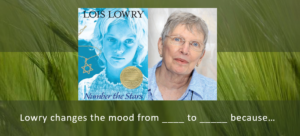03.24.23Planning for Error: Emma Gray Prepares to Push the Rigor in Number the Stars

One of our favorite topics at TLAC Towers is Checking for Understanding. How do teachers prepare for and react to student errors and misunderstandings? Many of our best videos on the topic are of math teachers–the nature of math makes predicting and sequencing errors a bit simpler than in the humanities, say. So we were especially thrilled when we came across a great example of Emma Gray using some of our favorite moves at University Prep in the Bronx. Our own Sarah Engstrom shared this analysis of the clip:
Planning for error might be an educator’s most powerful tool. When you spend time before the lesson anticipating specific mistakes – What will they misunderstand? Where will the misconception be? – you are more likely to notice these misunderstandings when they occur. In Teach Like a Champion 3.0¸ we share about researchers Christopher Chabris and Daniel Simons’ concept of intentional blindness, the experience of looking directly at something important and not seeing it. It’s an easy thing to do in the complex environment of a classroom, but overcoming this tendency is simpler than you might expect – “make the unexpected object or event less unexpected.” By priming yourself to notice the error, you’re more likely to respond to it productively. This is the kind of off-stage magic we saw when we watched Emma Gray, a teacher at University Prep in the Bronx recently.
Emma and her 5th grade class are reading Number the Stars when Emma asks why Lowry changes the mood to one that’s lighthearted after a tense moment. As students work independently, Emma scans for an anticipated error. Emma expects that although her students will be able to identify comic relief, they aren’t yet practiced at showcasing their analytical thinking, so Emma focuses on the “why.” Identification is not the same as analysis and she wants to see her students get deeper. She knows this question is worth pausing for– this is one of the key moments students need to grasp to understand this part of the novel.
Emma pauses her students (“Put our pencils down for a second and turn over here. Thank you.”) and names that she wants to push them further (“Comic relief from what?”) She then gives them an entry point (“Turn back to your Do Now. What did we say our mood was at the beginning?”) and offers a beautiful pre-planned scaffold (“I want you to use this sentence starter: Lowry changed the mood from blank to blank because…”) Importantly, she then sends students back to work to revise their response (“I’m going to give you two whole fresh minutes.”) and restarts her monitoring. This move shows that not only does she care that students get this important idea from the novel, but she’s also going to help them get there. Emma is their coach – the expert who can gently guide them to a more sophisticated understanding. It takes planning to know what to attend to and it takes a little more planning to know how to coax this thinking out of students.
Other things we noticed and loved:
- We also love the question she asks. Instead of the more simplistic “What is the mood?” Emma asks, “Why does Lowry change the mood?” Establishing the mood is important but it isn’t the stopping point.
- Emma’s sentence starter (Lowry changed the mood from blank to blank because…) is a great one not only because it causes students to think deeply about the key idea, but also because it’s evidence of her planning. She knew students could pinpoint the funny, lighthearted moment but might miss the significance of the timing of this moment in the text.
- ‘Whoops my bad, put that right below your answer, no need to erase” helps set up the nice Culture of Error – or feelings of mutual trust and comfort in taking intellectual risks – present in her classroom. An added bonus is that – for students who hate to erase and start over – it makes them more likely to see this as an opportunity rather than a chore.
By the way, Emma is using our own writing-intensive, knowledge-rich Reading Reconsidered Curriculum middle school literacy. If you are interested in learning more about or in piloting the Reading Reconsidered Curriculum please visit: https://teachlikeachampion.org/reading-reconsidered-curriculum/
